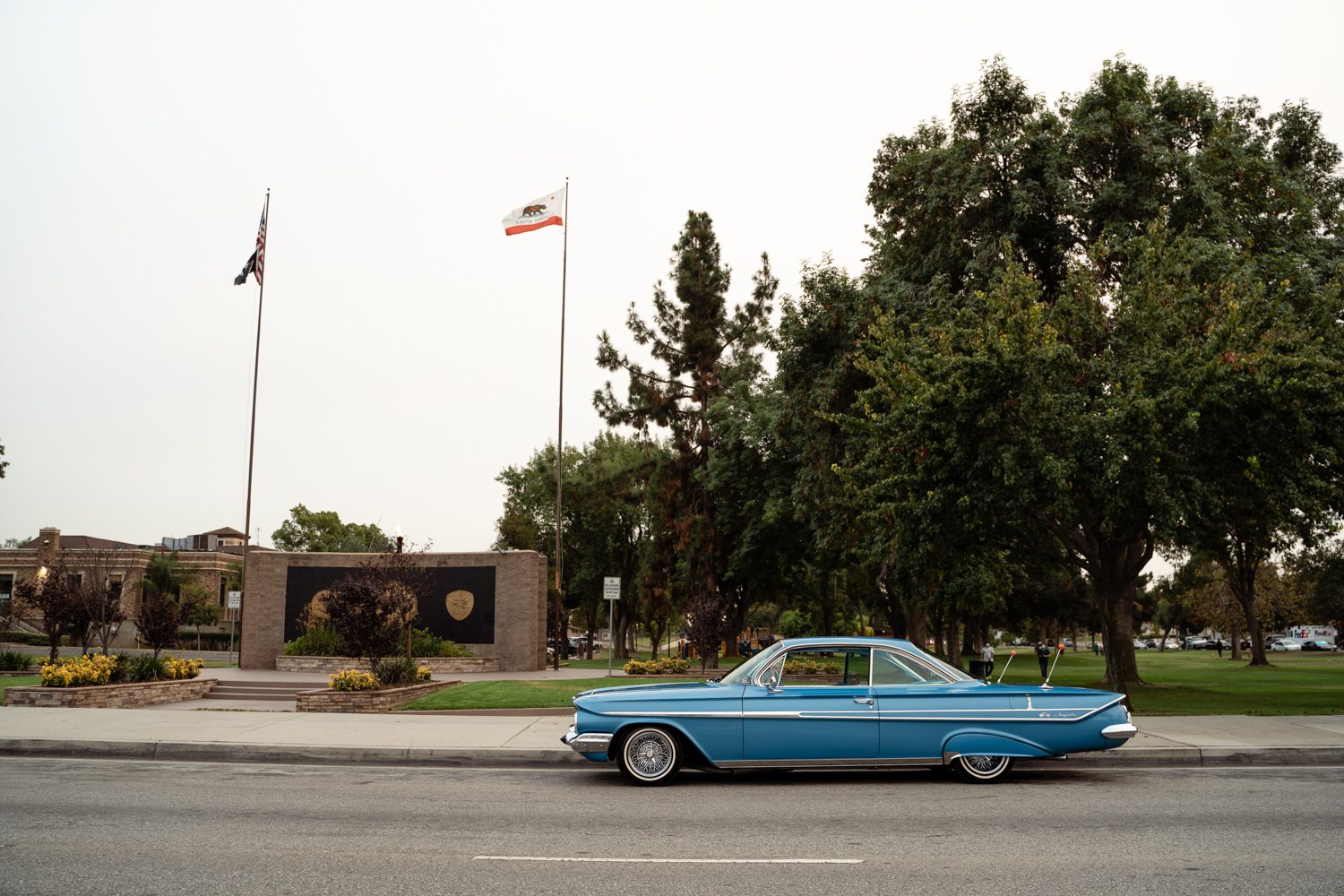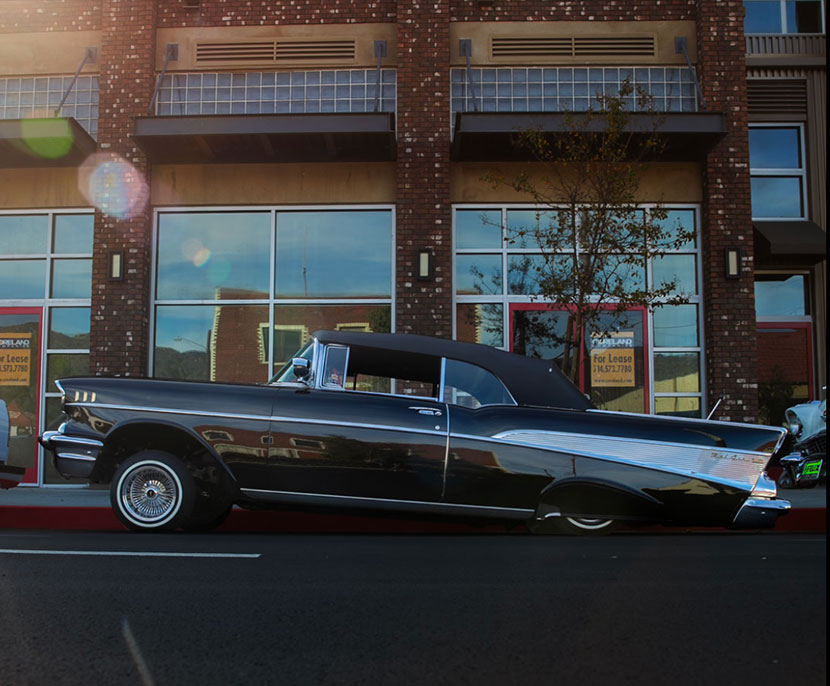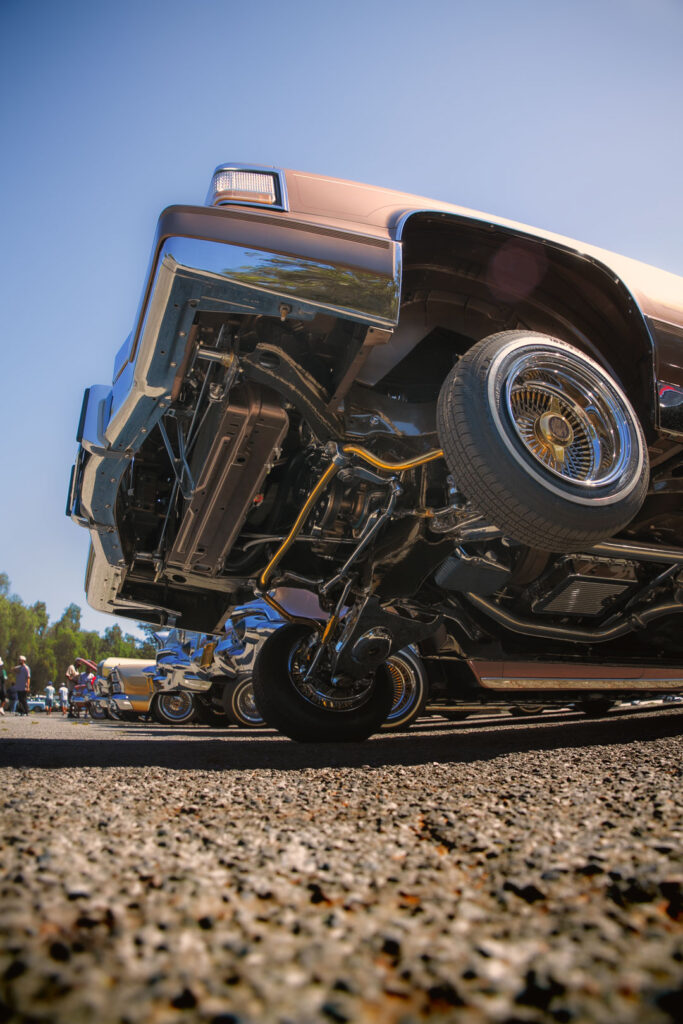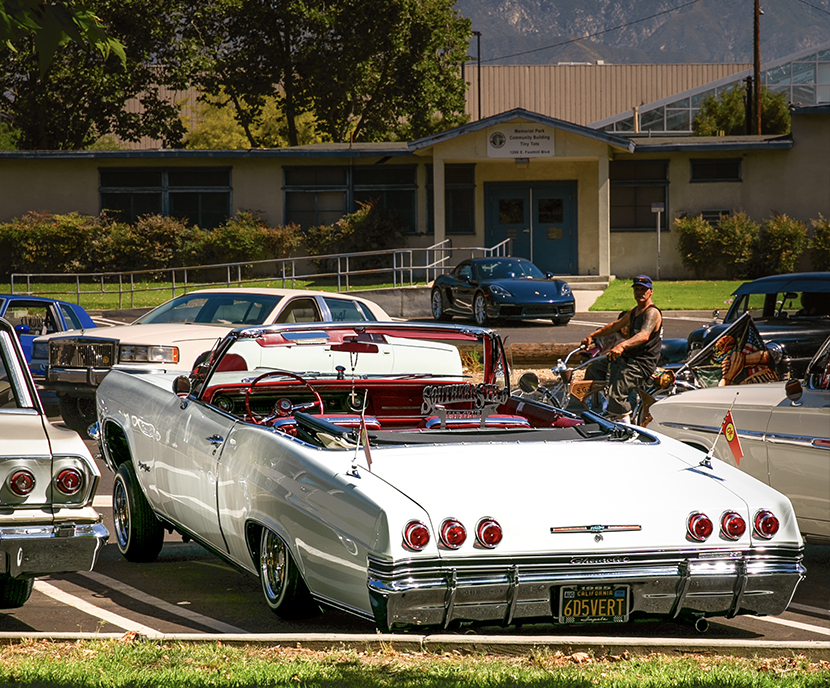
WHAT IS A LOWRIDER?
December 25, 2022 | Story: Jay Valdea

1961 Impala from Blvd Family | Owner: Angie Robles
What’s a lowrider? Who drives one? Where can you find them?
Ask anyone who’s ever been stopped in their tracks by the sight of one — these questions come easy.
Lowriders aren’t just cars; they’re moving pieces of art, dipped in paint so rich it tells its own story. They shine, they dance, they float down the street like poetry on chrome.
But why do they grab people the way they do?
Simple. You don’t see them every day.
Unlike hot rods, imports, or Euros that flood the streets, lowriders are rare by design. They’re not daily drivers — they’re dreams on wheels, and when they’re not cruising, they’re in the shop getting touched up, upgraded, perfected.
Because ask any real lowrider owner and they’ll tell you: “A lowrider is never done.”
It’s a forever project. A forever love.
For years, lowriding got painted in the wrong light — misunderstood, misrepresented.
But times have changed. The world’s starting to catch up, starting to see what we’ve always known.
So what is lowriding, really?
It’s not something you can explain in a sentence.
It’s a feeling. It’s family. It’s tradition.
It’s respect earned and stories passed down from the ’40s to today.
It’s the sound of oldies in the air, the smell of fresh paint and hydraulic fluid, the sight of candy-colored dreams rolling slow and proud.
It’s love. It’s unity.
It’s a culture that doesn’t just survive — it evolves, shines brighter, and gets better with every new generation that picks up the torch.
Lowriding isn’t just what we do.
It’s who we are.
Lowriding didn’t just happen — it was born.
Somewhere back in the 1940s, in the neighborhoods and backyards of a different America, a movement started rolling low and slow.
What began as simple customizations grew into something far bigger: a culture, a lifestyle, a statement.
Today, lowriding is best known for its brilliant, head-turning paint jobs and its signature style — cars that ride so low they kiss the pavement, then leap into the air or dance on three wheels, all thanks to the magic of hydraulics.
But the story runs deeper than flashy moves.
Every lowrider is a canvas — a rolling, breathing piece of art.
Every flake of paint, every etched window, every wire wheel tells a story, not just about the car, but about the hands, hearts, and families behind the build.
No matter the style — whether it’s a sleek Bomb, a hard-hitting G-body, or a classic Impala — every lowrider shares one thing: a love for customization and self-expression.
To most who build and ride them, these cars are more than just transportation.
They’re pride.
They’re history.
They’re a bridge to the past and a torch for the future.
In this continuing series, we’ll dig deeper into what makes the lowrider life so powerful — from the importance of family and loyalty, to the deep bonds of camaraderie that tie riders together, and the artful details that make each car a masterpiece, from the gleam of wire wheels to the hum and hiss of hydraulic systems.
Because lowriding isn’t just about cars.
It’s about carrying a legacy — and making sure it rolls on.
Is Lowriding A Multicultural Lifestyle?
Yes. It is. Lowriders are a unique and multicultural form of car culture that has gained popularity around the world. For those unfamiliar with lowriders, they are cars that have been customized to ride as low to the ground as possible, often through the use of hydraulic suspension systems or by cutting and lowering the car’s frame.
The origins of lowriding can be traced back to Chicano communities in the United States, particularly in Los Angeles. However, the culture has since spread to cities all around the world, attracting enthusiasts from a diverse range of backgrounds and cultures.
One of the defining features of lowriding culture is the strong sense of community that exists among its participants. Lowriders often come together to share their passion for cars and the art of customization, and they frequently participate in car shows and other events.
One such event is the annual Lowrider Super Show, which is held in different cities across the United States. At these shows, lowriders from all over the country come together to showcase their cars and compete for prizes. The Super Show is a celebration of lowriding culture and the creativity and pride that goes into building and customizing these cars.
One such event is the annual Lowrider Super Show, which is held in different cities across the United States. At these shows, lowriders from all over the country come together to showcase their cars and compete for prizes. The Super Show is a celebration of lowriding culture and the creativity and pride that goes into building and customizing these cars.In addition to the car shows, lowriding culture is also reflected in the music and art that is associated with it. Lowrider oldies, a genre of music that originated in the Chicano community, often features songs about cruising in lowrider cars and the lifestyle that surrounds them. Similarly, lowriding has inspired a range of artistic expressions, including murals, tattoos, and even fashion.
Overall, lowriding is a multicultural and vibrant cultural movement that has brought together people of all backgrounds and walks of life. It is a celebration of creativity, community, and the enduring appeal of classic cars. So, if you’re interested in learning more about lowriders and the lifestyle that surrounds them, be sure to check out the many events, music, and art that are a part of this unique and fascinating cultural movement.





